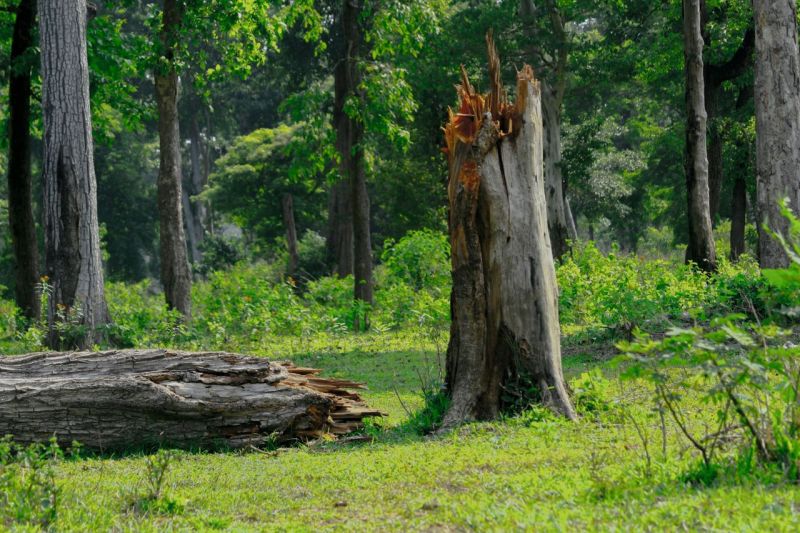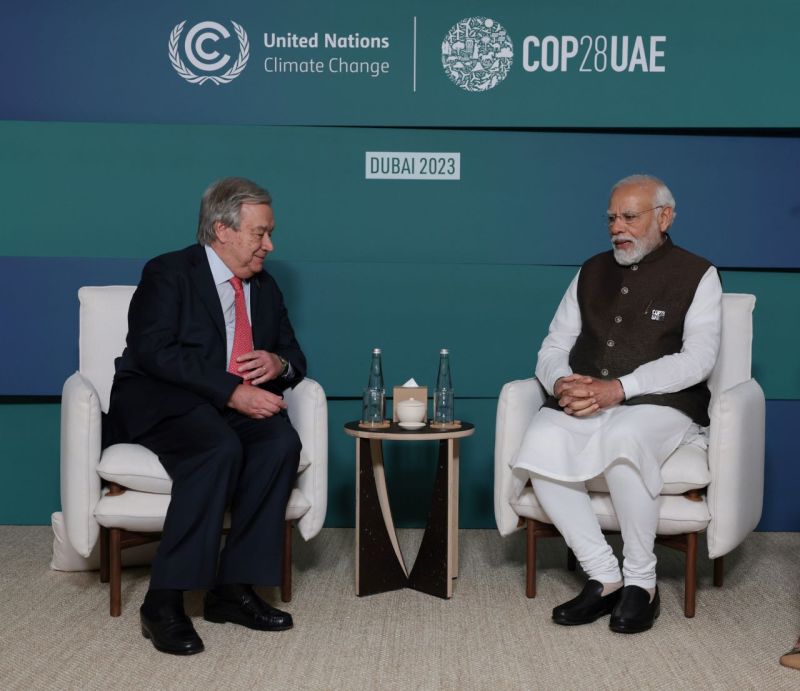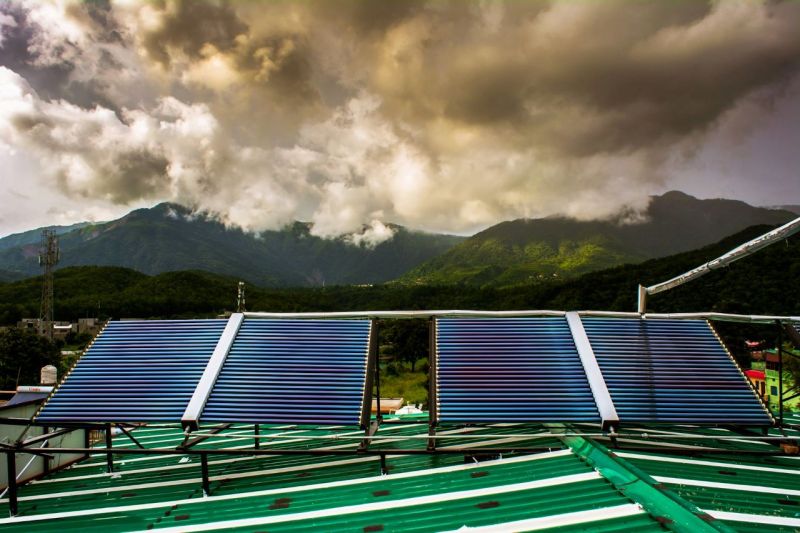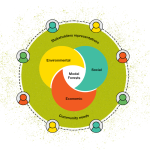Between now and 1 June, nearly a billion Indian voters will be casting their ballots to determine who will lead the world’s most populous country.
Over 60 countries are holding national elections in 2024, and the results could have major repercussions for climate policy around the world.
But in India, there is little doubt over the likely winner. A Pew survey found that 79 percent of Indian voters had a favorable or very favorable view of Prime Minister Narendra Modi.
The 73-year-old leader’s popularity means his Bharatiya Janata Party (BJP) is widely expected to secure a third consecutive term when results are announced in early June.
According to a recent poll, the most important issues to voters are unemployment and inflation. But the country also faces a growing deluge of climate disasters, including extreme heat, drought and floods, which are in turn taking a toll on the Indian economy.
One analysis suggests India lost an estimated 8 percent of its GDP due to the climate crisis in 2022 – a year when nearly 90 percent of Indians were exposed to the dangerous health impacts of extreme heat.
Right now, the southern city of Bengaluru, known as ‘India’s Silicon Valley,’ is running out of water less than two years after it was left underwater following heavy rainfall.
And yet, the word “climate” hardly features in the BJP’s election manifesto – or that of the largest opposition party, the Indian National Congress.
So, where does the climate crisis fall in India’s list of priorities, and how do its political leaders aim to tackle it?
What do the BJP and Congress manifestos say?
Modi ki guarantee (Modi’s guarantee), the ruling party’s manifesto, provides a roadmap on the government’s priorities.
Promode Kant, a forestry and climate change expert and director of the Institute of Green Economy, says the manifesto mainly focuses on expanding existing environmental and climate change programs.
“One major part of the manifesto is seeking energy independence in an effort to make India a global leader in the field – reducing imports, replacing fossil fuels with renewable energy, and manufacturing electric cars in India, leading to net-zero emissions by 2070,” he says.
“It also includes expanding subsidies for solar panels, which have covered 10 million households so far,” he adds.
To date, the program has mainly attracted middle-income families, but poor households will now also be encouraged to adopt solar with the promise of “free energy.”
The scheme is part of the BJP’s plan to achieve energy independence by 2047 – in time for the 100th anniversary of India’s independence from Britain.
Kant says this goal initially attracted a large amount of skepticism, especially in the media, as few believed India could come close to developing the amount of renewable energy needed.
“In the beginning, it was a step in the dark,” he says, “but now, we are achieving more and more [in this sector]. The way I see it, it’s all very doable.”
In its manifesto, the Indian National Congress promises to create “an independent Environment
Protection and Climate Change Authority” to set and enforce environmental standards and climate policies.
Like the BJP, Congress has also set a target of achieving net zero by 2070. It aims to achieve this through a “Green New Deal Investment Programme” and a “Green Transition Fund” to expand renewable energy production.
While it has not set specific targets related to renewable energy, its program heavily emphasizes local power generation, including incentives for village councils to install solar grids.

Deforestation
India saw a 1.3-percent net increase in tree cover between 2000 and 2020, according to Global Forest Watch. However, it also lost 414,000 hectares of primary forest between 2002 and 2023, mainly due to logging.
“On the one hand, India is doing well planting trees and regreening, but at the same time, we are losing good forests,” Kant observes.
“For example, millions of hectares of forest land are being handed over under a land rights act that allows citizens to claim they lost land during the British colonial period.
“It was intended as a one-time law, but it has continued to function, so good-quality public land is now back in private hands.”
The ruling party plans to create a 1,400-kilometer-long and five-kilometer-wide green belt around the Aravalli mountain range in the country’s northwest.
The ‘Aravalli Green Wall’ aims to address rising rates of land degradation and preserve biodiversity and will include planting new native trees to rehabilitate forest cover.
Congress, for its part, says it will work with state governments to increase forest cover and “involve local communities in afforestation.” It also plans to revise India’s definitions of ‘forest’ and ‘forest cover’ “in accordance with modern scientific standards.”
The BJP has maintained its existing pledge to create an additional carbon sink of 2.5 to 3 billion tons of CO2 equivalent by 2030 by enhancing tree cover.
“We need to look at the loss of forests to meet the demand for land, because that is a demand that is unending,” Kant says. “Good forest is scarce. We can’t afford to lose it.”
However, the BJP manifesto does not address the forest rights of Scheduled Tribes, which experts say have been weakened in the past five years, despite evidence that deforestation and land degradation rates are much lower on Indigenous lands globally.
Congress, on the other hand, has pledged to set up a national mission to protect the rights of forest dwellers.

Pollution
India is also grappling with some of the world’s worst air pollution: a recent report finds that the country is home to 83 of the world’s 100 most polluted cities.
In 2019, the Indian government launched the National Clean Air Programme (NCAP) to tackle the issue. The project now covers 131 cities and has plans to expand.
“However, to deal with the pollution issue, we must also create more economic opportunities like ecotourism that don’t impact the environment,” Kant emphasizes.
“India also needs to create well-paying non-farm employment opportunities in rural and hill areas to reduce the number of people from there into cities looking for economic opportunities. We have some progress here, but more needs to be done.”
If reelected, the BJP says it will expand the Namami Gange project to other areas. The massive project aims to clean up the 2,500-kilometer-long Ganges River, which is heavily polluted following decades of neglect.
The river, which is sacred to Hindus, is used as a water source by more than half a billion people and home to a wide range of wildlife, but some 12,000 million liters of sewage flows into the Ganges Basin every day.
This pollution has led to a high rate of waterborne diseases and deaths, and children are among the most vulnerable.
“Efforts to clean up the river started in the 1990s with very limited funding, and the plan was not focused,” says Kant. “But in the last five years, we have seen reasonable success, with sewage from villages being reduced.”
Meanwhile, Congress has pledged to ban the discharge of effluent into rivers, as well as to legally require municipal and village councils to create schemes for its disposal.

Can India become a climate leader?
While India is the world’s third-largest carbon emitter, its per capita emissions are far lower than those of rich countries. Its historical emissions are also relatively low, especially when accounting for colonial rule.
Modi has been working to position India as a leading voice on the climate crisis. At last year’s COP28 climate summit, he called on rich countries to ramp up climate finance and technology transfer to countries in the Global South. He also offered to host the COP33 summit in 2028.
The BJP manifesto calls for the strengthening of Mission LiFE (Lifestyle for Environment), a program launched in 2022 to promote sustainable living, including recycling, reducing plastic consumption, reducing waste and adopting sustainable food systems.
However, the Climate Action Tracker rates India’s current climate commitments as “highly insufficient.”
India has set two official targets to be achieved by 2030: to reduce emissions intensity by 45 percent below 2005 levels, and to increase the share of non-fossil fuel power capacity to 50 percent.
But the country is set to double coal production by 2030, and it will increase its coal-fired power capacity by 13.9 gigawatts this year.
Neither the BJP nor Congress make any mention of coal in their respective manifestos.
The post As India heads to the polls, what’s in store for the climate? appeared first on #ThinkLandscape.




